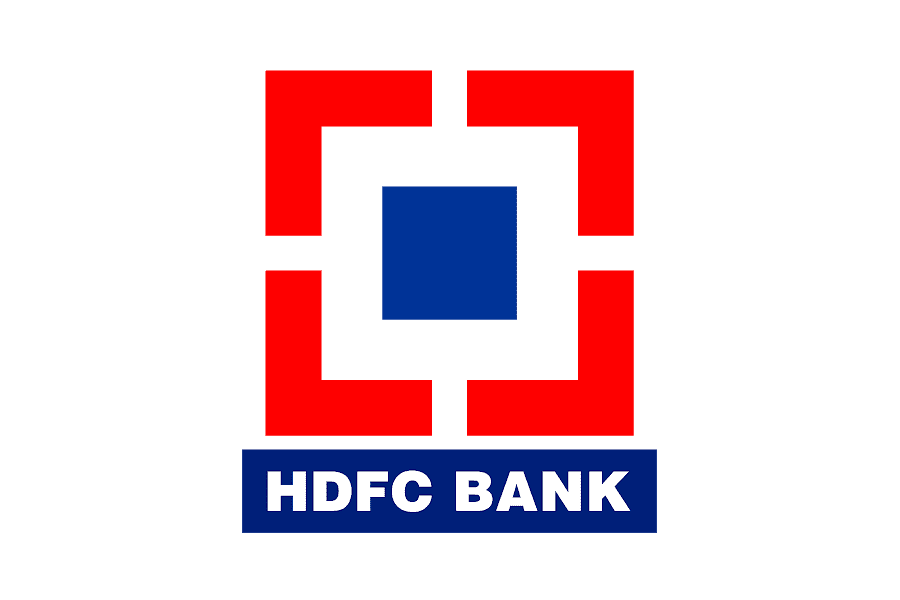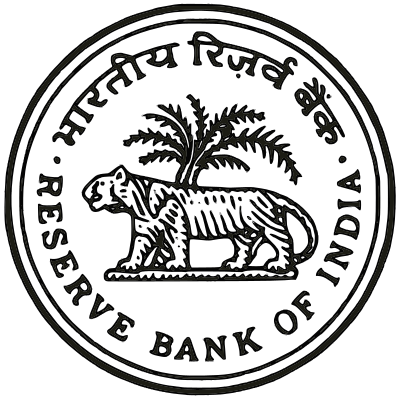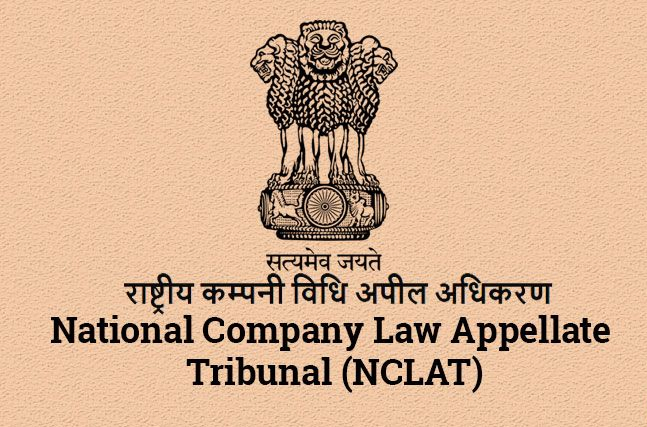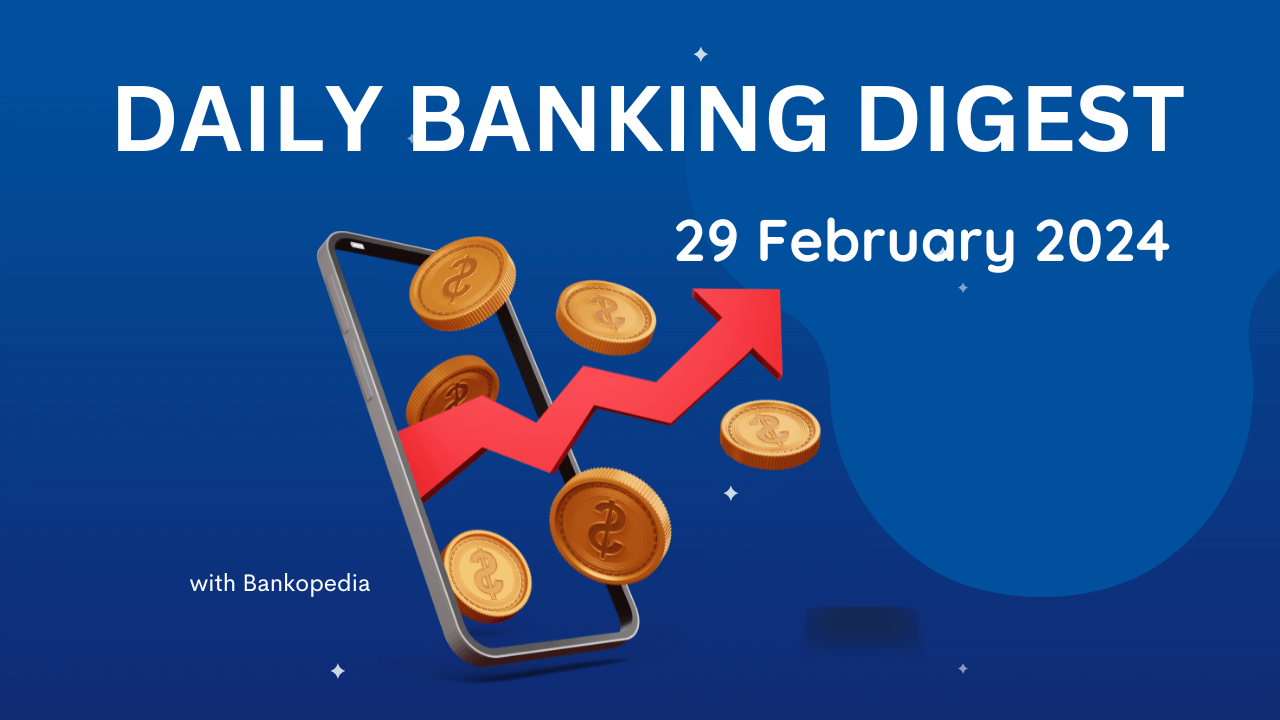Welcome to Daily Banking Digest, your premier source for the latest news and insights on April 05, 2024, focusing on banking, the economy, and finance. Our platform offers a comprehensive overview of the day’s most critical financial stories, market trends, and economic developments. Whether you’re a professional in the financial sector, an investor monitoring market movement, or someone interested in staying informed about the economic landscape, Daily Banking Digest provides reliable, up-to-date information.
Join our Telegram Channel for Daily PDF in your Inbox – Click Here
Table of Contents
India Emerges as a Major Importer of Ethane from the United States in 2023
India is the second largest importer of ethane from the US, driven by rising petrochemical demand, lower US prices, and increased tanker capacity. Ethane is used to produce plastics, anti-freeze, and detergents. The US exported a record 4,71,000 barrels per day (b/d) of ethane in 2023, with China and India being the top importers. India’s ethane imports from the US have fluctuated in recent years, but remain significant. Indian oil and gas companies are expanding their petrochemical businesses, leading to increased demand for ethane.
Key Points
India’s Ethane Imports – India is the second largest importer of ethane from the US. – India imported 74,000 b/d of ethane from the US in 2023. – India’s ethane imports have increased in recent years due to rising petrochemical demand.
US Ethane Exports – The US exported a record 4,71,000 b/d of ethane in 2023. – China and India were the top importers of US ethane. – The US has been exporting ethane since 2014.
Petrochemical Demand – Ethane is used to produce plastics, anti-freeze, and detergents. – Demand for petrochemicals is increasing in India. – Indian oil and gas companies are expanding their petrochemical businesses.
Ethane as a Petrochemical Feedstock – Ethane is a preferred petrochemical precursor in India. – Ethane can yield more than 80% ethylene, compared to 30% for naphtha. – Ethane’s low relative cost and high ethylene yield make it an attractive feedstock.
US Ethane Prices – Ethane prices at Mont Belvieu, Texas, were volatile in 2023. – Ethane prices averaged under 25 cents per gallon in 2023. – Lower natural gas prices led to a decline in ethane prices in late 2023.
HDFC Bank’s Foreign Ownership Nears Threshold, but Falls Short of MSCI Index Inclusion Requirement
HDFC Bank’s foreign room has increased to 24.95%, slightly below the 25% threshold required for an augmented weight in MSCI indices. This increase is due to selling by overseas investors during the March quarter. Despite the potential for further selling, analysts believe the stock is undervalued and recommend buying on declines.

Key Points:
Foreign Room: – Increased to 24.95% due to selling by overseas investors. – Foreign investment limit in privately held banks is 74%.
MSCI Index Weight: – Increase in FPI ownership falls short of the 25% minimum required for an augmented weight. – MSCI has historically adhered strictly to its rules.
Analyst Outlook: – Abhilash Pagaria of Nuvama Alternative & Quantitative Research sees potential for a weight-up adjustment in the August review. – Bernstein has an Outperform rating with a price target of Rs 2,100. – IIFL Securities has a Buy rating due to market share potential and attractive valuations.
Stock Performance: – HDFC Bank shares have declined nearly 10% this year. – The stock is trading near multi-year lows.
Automakers Rush for Manual EMPS Certificates to Secure Subsidies Ahead of Navratri
Ola Electric, TVS Motor, Bajaj Auto, Hero MotoCorp, and Ather Energy have received manual certificates from the Ministry of Heavy Industries (MHI) to avail subsidies under the Electric Mobility Promotion Scheme (EMPS) 2024. The online portal for the scheme is not yet ready, but the manual certificates allow companies to sell electric vehicles with subsidies from April 3rd. This is expected to boost sales during upcoming festivals like Navratri and Baisakhi.
Key Points:
- Manual Certificates Issued: Companies have received manual certificates from MHI for availing subsidies under EMPS 2024.
- Online Portal Not Ready: The online portal for the scheme is still under development and expected to be live in 10 days.
- Subsidy Eligibility: Vehicles manufactured from April 3rd are eligible for subsidies under the scheme.
- Upcoming Festivals: The scheme is expected to boost sales during upcoming festivals like Navratri and Baisakhi.
- Other Beneficiaries: Mahindra Last Mobility Mobility and Piaggio Vehicles have also received certificates for selling electric three-wheelers under EMPS 2024.
- Subsidy Amounts: The scheme offers subsidies of up to ₹10,000 for electric two-wheelers, ₹25,000 for electric three-wheelers, and ₹50,000 for heavy electric three-wheelers.
- Scheme Outlay: The EMPS 2024 has an outlay of ₹500 crore.
Foreign Investors Face Dilemma over RBI’s Currency Derivatives Directive
The Reserve Bank of India (RBI) has extended the deadline for foreign portfolio investors (FPIs) to comply with new currency derivatives regulations from April 5 to May 3. The regulations require FPIs to have underlying exposure when participating in currency derivative contracts. This has created uncertainty among FPIs, with some facing the need to square off positions before the deadline. The market is concerned about the potential impact on liquidity and volatility in the exchange-traded currency derivatives market.

Key Points
Deadline Extension – RBI has extended the applicability of the circular to May 3 from April 5.
Purpose of Currency Derivatives – Currency derivatives are permitted only for hedging exposure to foreign exchange rate risks.
FPI Dilemma – FPIs without underlying exposure and foreign brokers engaged in prop or high-frequency trading may need to square off positions.
Market Impact – Open interest positions in major currency pairs have declined in recent days. – The market may see a reduction in speculators and arbitrageurs, leaving only hedgers. – Banks and brokers may also exit the market, leading to reduced liquidity and demand.
Hedging Practices – Hedgers include exporters, importers, and FPIs. – Net FPI flows and Indian current account deficit can lead to long foreign currency and short rupee positions in USD-INR.
Postponement Impact – The postponement of the circular is expected to reduce confusion and volatility in the exchange-traded options of the Indian rupee.
Securitization Market in India Witnesses 4% Growth in FY24, Reaching ₹1.88 Lakh Crore
Despite the exit of HDFC, the securitisation market in India grew 4% in FY24 to ₹1.88 lakh crore. The growth was driven by increased participation from banks and is expected to cross ₹2 lakh crore in FY25. The market has witnessed a shift towards pass-through certificates (PTCs) and diversification into non-financial sector entities.
Key Points
Growth in Securitisation Volumes – Securitisation volumes grew 4% y-o-y to ₹1.88 lakh crore in FY24. – Volumes are projected to cross ₹2 lakh crore in FY25 due to increased participation from banks.
Q4 FY24 Performance – Securitisation volumes in Q4 FY24 grew 26% over the previous quarter to ₹48,000 crore. – Volumes were lower compared to Q4 FY23, which included wholesale loan securitisation.
Factors Driving Growth – High retail credit demand catered to by NBFCs and HFCs. – Increased reliance on securitisation as a funding tool. – Growing investor base.
Exit of HDFC – HDFC’s exit from the market in Q2 FY24 contributed to a 25% y-o-y growth in volumes, excluding HDFC. – The exit led to an increase in the share of PTCs in the market.
Diversification and Innovation – Vehicle loans remain the largest asset class in PTC issuances. – Microfinance and mortgage loans are largely securitised through direct assignments. – Small business loans and personal loans are increasing their participation in the market. – Non-financial sector entities are securitising trade receivables and lease rentals, diversifying the PTC market.
Chola MS General Surpasses ₹7,500 Crore in Gross Written Premium for FY24
Cholamandalam MS General Insurance Company Ltd. (Chola MS) has achieved a 22% growth in its gross written premium (GWP) for the fiscal year FY24, surpassing ₹7,500 crore. The company aims to continue growing at a rate higher than the industry average of 14-15%. Chola MS expects to record its highest-ever annual profit in FY24.

Key Points:
Growth in Gross Written Premium (GWP) – GWP crossed ₹7,500 crore in FY24, a 22% increase from FY23. – GWP stood at ₹6,156 crore in FY23 and ₹4,824 crore in FY22.
Growth Target – Chola MS aims to grow more than the industry average of 14-15%. – The company targets a growth rate of over 22%.
Profitability – Chola MS expects to record its highest-ever annual profit in FY24. – During the nine-month period of FY24, profit after tax more than doubled to ₹264 crore.
Business Segments – Motor business accounts for approximately two-thirds of Chola MS’s business. – Commercial and health segments contribute about 14% and 15% respectively. – Crop business has a share of around 5% after its re-entry.
Fiserv Aims to Enhance India’s Payment Landscape with Clover Expansion
Fiserv, a global fintech company, aims to expand its presence in India, the largest market in the Asia-Pacific region. The company plans to introduce its payment solution, Clover, for small businesses in India. Fiserv’s Global Capability Centre in India plays a significant role in developing and deploying Clover, as well as driving innovations in various products and solutions.

Key Points:
Expansion in India: – Fiserv plans to launch its Clover payment solution in India, targeting small businesses.
Global Presence: – The US is Fiserv’s largest market, followed by EMEA, LATAM, and APAC.
Payment Services: – Fiserv offers a range of payment services, including merchant acquiring, digital payments, and debit/credit card processing.
Clover Solution: – Clover is a comprehensive solution for small businesses, enabling inventory management, payroll, scheduling, and reservations.
Development and Deployment: – Clover’s development and deployment are handled by teams in India and Sunnyvale, US.
Global Capability Centre (GCC) in India: – Fiserv’s GCC in India employs nearly 7,000 employees and handles technology, client services, and operations.
Innovations from India: – The India GCC has developed innovative products, such as instant settlement and CardLess EMI.
Carat Operating System: – Fiserv’s Carat operating system has been deployed by IndianOil, enabling payments at over 15,000 fuel outlets in India.
Indian Government Provides Over $1 Billion in Incentives to Private Companies for Manufacturing Initiatives
India has disbursed $1.02 billion in incentives under its Production-Linked Incentive (PLI) scheme, which aims to boost domestic manufacturing. The scheme has attracted over $13 billion in investments from private companies and has contributed to a record $15 billion in mobile phone exports.
Key Points:
Investments and Incentives: – Over $13 billion invested by private firms under the PLI scheme. – $1.02 billion disbursed as incentives to boost local manufacturing.
Scheme Overview: – 1.97-trillion-rupee ($24 billion) PLI scheme covers 14 sectors. – Aims to promote India as a global manufacturing hub.
Impact on Exports: – Mobile phone exports reached a record $15 billion in the fiscal year ending March 31.
Sector Performance: – Production in mobile phones, electronics, and food processing has increased. – White goods and drones have also seen growth.
Lagging Sectors: – Textile and specialty steel sectors are lagging behind. – Incentives for these sectors may require adjustments.
Scheme Review and Expansion: – India regularly reviews the scheme’s uptake. – No immediate plans to expand incentives to other sectors.
Indian Railways’ Action Plan for New Government: Vande Bharat Sleeper Coaches and J&K Rail Projects in Focus
The Indian Railways plans to introduce sleeper variants of Vande Bharat trains and complete crucial rail connectivity projects in Kashmir within the first 100 days of the new government’s tenure. The plan also includes finalizing rolling stock procurement for the bullet train trial run by August 2026.
Key Points:
Sleeper Variant Vande Bharat Trains: – Chennai’s Integral Coach Factory is developing sleeper variant Vande Bharat trains for long-distance overnight journeys. – These trains will provide more comfort for passengers on longer routes.
Udhampur-Srinagar-Baramula Rail Link (USBRL): – The USBRL project aims to connect Kashmir with the rest of India by rail. – The project includes the world’s highest railway bridge on the Chenab River. – Completion of the USBRL is a key priority within the 100-day agenda.
Bullet Train Rolling Stock Procurement: – The rolling stock procurement plan for the Ahmedabad-Mumbai bullet train is expected to be finalized within the first 100 days of the new government. – The project is being funded by a loan from the Japan International Cooperation Agency (JICA).
NCLAT Orders NHAI to Refrain from Terminating Concession Agreement with IL&FS Group Entity
The National Company Law Appellate Tribunal (NCLAT) has ordered the National Highways Authority of India (NHAI) to refrain from terminating the concession agreement with Baleshwar Kharagpur Expressway Ltd (BKEL), an IL&FS group entity. NCLAT emphasized that BKEL’s insolvency resolution is in its final stages and termination would hinder the process.

Key Points:
NHAI Directed Not to Terminate Concession Agreement: – NCLAT instructed NHAI to take appropriate measures for BKEL’s insolvency resolution. – Termination at this stage would complicate the resolution process.
BKEL’s Insolvency Resolution: – BKEL’s resolution is proceeding as per the framework approved by NCLAT for IL&FS group entities. – Payments to creditors, including lenders, must follow the resolution process.
Concession Agreement Details: – Concession agreement signed between NHAI and BKEL in 2012. – BKEL received financial facilities from SBI. – BKEL was obligated to pay concession fees and premium to NHAI. – Deferment in premium payment granted in 2016.
IL&FS Crisis and BKEL’s Red Entity Status: – IL&FS crisis occurred in 2018. – BKEL categorized as a ‘Red Entity’ in 2019, indicating financial and operational challenges.
NHAI’s Demand and SBI’s Objection: – NHAI demanded premium dues and other charges. – SBI objected, arguing that it could derail the resolution process. – NHAI proposed procuring a third-party agency for user fee collection.
SBI’s Approach to NCLAT: – SBI approached NCLAT to prevent NHAI’s termination proposal. – SBI highlighted the insufficient balance in BKEL’s escrow account to meet NHAI’s demands.
AU Small Finance Bank’s Annual Gross Advances Surge by 25%
AU Small Finance Bank reported a 25% year-over-year growth in gross advances, driven by both retail and commercial banking segments. The bank’s asset quality remains stable, and the merger with Fincare Small Finance Bank has resulted in a combined loan business of Rs 96,490 crore. AU is aligning deposit rates and integrating operations with Fincare, with the process expected to be completed within nine months. The bank’s standalone deposit base grew 26% year-on-year, led by strong CASA mobilization.

Key Points:
Gross Advances: – Grew 25% year-on-year to Rs 73,999 crore.
Asset Quality: – Remains within the long-term range.
Combined Loan Business: – With Fincare Small Finance Bank, stands at Rs 96,490 crore.
Deposit Rates: – Aligned with AU deposit rates at Fincare branches from April 1.
Integration Process: – Expected to be completed over the next nine months.
Incremental Cost of Funds: – Dipped by 4 basis points to 7.71% in Q4.
Standalone Deposit Base: – Grew 26% year-on-year to Rs 87,182 crore.
Combined Deposits: – Including Fincare, reached Rs 97,704 crore.
HDFC Bank’s Q4 Deposits Surge 7.5%, Macquarie Report Lauds ‘Exceptional Performance’
HDFC Bank reported a strong performance in the fourth quarter of FY24, with a 7.5% growth in deposits and a 55% increase in advances. However, the share of low-cost deposits declined due to the merger with HDFC. The bank’s shares rose by 2.8% following the disclosures.

Key Points:
Deposit Growth: – Total deposits increased by 26% year-on-year to Rs 23.8 lakh crore. – Rs 1.6 lakh crore in deposits mobilized in the fourth quarter alone. – Retail deposits contributed Rs 1.28 lakh crore, while wholesale deposits contributed Rs 38,000 crore.
CASA Deposits: – Share of CASA deposits fell to 38% from 44% a year ago. – CASA deposits stood at Rs 9.09 lakh crore as of March 31, 2024. – Retail CASA deposits grew by Rs 47,900 crore in the fourth quarter.
Advances: – Gross advances rose by 55% to Rs 25.08 lakh crore. – Retail loans increased by 109%. – Commercial and rural banking loans grew by 24.6%. – Corporate and other wholesale loans rose by 4.1%.
Stock Performance: – HDFC Bank shares rallied by 2.8% to close at Rs 1524. – Macquarie report suggests the stock is undervalued and recommends adding it to portfolios.
Risks: – Execution of the merger with HDFC could impact loan growth and profitability.
Vegetarian Thalis Rise in Price, Non-Vegetarian Options Become More Affordable
The cost of a home-cooked vegetarian thali in India increased by 7% in March 2024 compared to the same month in 2023, while the cost of a non-vegetarian thali decreased by 7%. The price hike in the vegetarian thali is attributed to rising prices of onions, tomatoes, and potatoes, while the decline in the non-vegetarian thali is due to lower broiler chicken prices.
Key Points:
Cost of Vegetarian Thali:
- Increased by 7% in March 2024 to Rs 27.3.
- Price hike driven by rising costs of onions, tomatoes, and potatoes.
- Low supplies and a low base last fiscal shaped tomato prices.
- Rice and pulses prices also contributed to the increase.
Cost of Non-Vegetarian Thali:
- Decreased by 7% in March 2024 to Rs 54.9.
- Price decline attributed to lower broiler chicken prices due to excess supply.
- Broiler prices rose in March due to increased demand during Ramzan and higher feed costs.
Divergence in Costs:
- Vegetarian thali has become more expensive year-on-year, while the non-vegetarian thali is cheaper.
- Divergence due to falling broiler chicken prices.
Future Outlook:
- Wheat prices expected to decline with fresh harvest.
- Tomato prices likely to remain stable.
- Onion prices may increase due to lower rabi harvest.
- Thali prices may increase in the future.
Bond Yields Steady Ahead of Crucial Interest Rate Announcement on Friday
Indian government bond yields remained stable on Thursday as investors awaited the Reserve Bank of India’s (RBI) policy decision on Friday. The market anticipates the RBI to maintain interest rates until July due to strong economic growth and moderating inflation. However, investors were cautious ahead of bond auctions and the implementation of the multiple price method.
Key Points:
RBI Policy Decision: – Market participants await RBI’s commentary on inflation and liquidity management. – Economists predict interest rates will remain on hold until July.
Yield Curve: – The 10-year bond yield ended at 7.0934%, slightly lower than the previous close. – The yield curve is relatively flat, making it unlikely for the RBI to change its stance prematurely.
Monetary Policy Stance: – RBI’s current stance is ‘withdrawal of accommodation,’ indicating tight policy. – The RBI may consider rate cuts in August, assuming the Federal Reserve starts cutting rates in June.
Inflation: – India’s retail inflation was 5.09% in February. – RBI Governor Shaktikanta Das has emphasized that rate cuts will only be considered when inflation eases towards the 4% target.
Bond Auctions: – New Delhi will sell 380 billion rupees of bonds on Friday, including a new 10-year benchmark. – Investors are cautious due to the implementation of the multiple price method in bond auctions.
U.S. Bond Yields: – U.S. bond yields remain elevated due to concerns over the timing and quantum of rate cuts by the Federal Reserve. – The probability of a Fed cut in June has decreased to 62.5%.
RBI Postpones Implementation of Exchange-Traded Derivatives Rules to May 3
The Reserve Bank of India (RBI) has postponed the implementation of its consolidated directions for exchange-traded currency derivatives (ETCD) by a month, providing relief to the market after a period of panic. The RBI emphasized that the regulatory framework for ETCDs remains unchanged, and participants must have valid underlying exposure to use these derivatives.
Key Points:
- Implementation Delay: RBI delays implementation of ETCD directions by a month, to May 3, 2024.
- Market Panic: Indian rupee’s exchange-traded options experienced volatility due to brokers requesting proof of underlying exposure.
- Underlying Exposure Requirement: RBI permits positions up to $100 million without documentary evidence, but underlying exposure remains mandatory.
- Regulatory Consistency: RBI emphasizes that the ETCD regulatory framework has not changed.
- Market Reaction: Market participants view the delay as an opportunity to close out positions.
- Client Undertaking: Nuvama Professional Clients Group will continue to request client undertakings for underlying exposure.
Government Disburses Over $1 Billion to Private Companies Under PLI Scheme
India’s Production-Linked Incentive (PLI) scheme has disbursed $1.02 billion in incentives to boost local manufacturing, attracting over $13 billion in investments from private firms. The scheme aims to make India a global manufacturing hub and has seen participation from major companies like Apple, Samsung, and Reliance Industries. It has also contributed to a record $15 billion in mobile phone exports.
Key Points:
- Incentives Disbursed: $1.02 billion disbursed as incentives under the PLI scheme.
- Investments Attracted: Over $13 billion invested by private firms under the scheme.
- Scheme Coverage: 14 sectors covered by the PLI scheme, including electronics, drones, and mobile phones.
- Participating Companies: Large global and Indian firms, such as Apple, Foxconn, and Reliance Industries, have participated in the scheme.
- Export Impact: Mobile phone exports reached a record $15 billion in the fiscal year ending March 31.
- Sector Performance: Production in mobile phones, electronics, and food processing has increased significantly, while white goods and drones have also seen growth.
- Lagging Sectors: Textile and specialty steel sectors are experiencing some lag and may require adjustments to incentives.
- Scheme Review: The PLI scheme is regularly reviewed for uptake and effectiveness.
- Expansion Plans: No immediate plans to expand incentives to other sectors.
IBM and Microsoft Partner to Establish Innovation Hub in Bengaluru
IBM Consulting and Microsoft have collaborated to launch the IBM-Microsoft Experience Zone in Bengaluru, a dedicated space for clients to explore how generative AI, hybrid cloud, and other Microsoft technologies can enhance their business transformations.
Key Points:
- Collaboration: IBM Consulting and Microsoft have partnered to create the Experience Zone.
- Purpose: The Experience Zone provides a platform for clients to explore and co-create generative AI-powered solutions.
- Technology Zones: Clients can work with IBM Consulting in various technology zones to develop solutions leveraging Azure OpenAI Service, Copilot, and other Microsoft technologies.
- Business Solutions: The Experience Zone showcases business solutions for cloud modernization, data analytics, customer relationship management, employee experience, finance, IoT, and emerging technologies.
- Industry Solutions: The Experience Zone also highlights industry-specific solutions for government, retail, and energy sectors.
WTO Discussions: RBI and NPCI Advocate for Lower Remittance Costs
India has advocated for reducing the cost of cross-border remittances at the World Trade Organization (WTO) to promote international trade. The country has highlighted the high cost of cross-border payments and proposed measures to make them cheaper, faster, and more accessible.

Key Points:
1. India’s Proposal: – India has proposed reducing the cost of cross-border remittances to promote international trade. – The proposal aims to make cross-border payments cheaper, faster, more transparent, and accessible.
2. High Cost of Remittances: – The global average cost for sending remittances is 6.18%, higher than the sustainable development goal of less than 3%. – Around 78% of total remittances go to low- and middle-income countries, including India.
3. Importance of Lower Transaction Costs: – Lower transaction costs are crucial for reducing inequality within and among countries. – India is expected to receive nearly $125 billion in remittances in 2023, the highest in the world.
4. Presentation to WTO: – Senior officials from the Reserve Bank of India (RBI) and the National Payments Corporation of India (NPCI) presented India’s proposal to the WTO. – The presentation highlighted the importance of remittances in India’s balance of payments and as a source of income.
5. Support for India’s Proposal: – The Philippines and South Africa have supported India’s proposal. – Bangladesh, Nepal, and Sri Lanka have backed India’s call for a work programme on the issue.
6. Proposed Work Programme: – India has proposed a work programme to review the cost of cross-border remittances, assess trends, and consider the impact of technology and new market players. – The work programme would also examine the drivers of costs and challenges in reducing them, as well as opportunities for lowering costs through digitalization.
US Has Not Requested India to Reduce Russian Oil Imports: Official
The United States has not requested India to reduce its imports of Russian oil. The US Treasury Department clarified that Russian oil refined in India is not technically considered Russian oil and is not subject to sanctions. The US aims to limit Russia’s profits from oil sales while maintaining the global oil supply.
Key Points:
US Position on Indian Oil Imports: – The US has not asked India to reduce Russian oil imports.
Status of Russian Oil Refined in India: – Russian oil refined in India is not considered Russian oil from a technical perspective. – Imports of refined products from Russian oil do not violate sanctions.
US Goal: – To limit Russia’s oil sales options and profits.
Price Cap Mechanism: – The price cap bans Western maritime services for Russian oil priced above $60 per barrel. – Buyers can purchase Russian oil at deeper discounts if they avoid Western services.
Russia’s Response: – Russia is using its own fleet and insurance to supply crude oil.
G7’s Role: – G7 nations have the option to review the price cap based on market conditions.
India’s Position: – India will continue to purchase Russian oil for its energy needs and to prevent global oil price surges.
IndusInd Bank Reports 18% Surge in Loan Portfolio for Q4
IndusInd Bank and Suryoday Small Finance Bank reported strong growth in advances and deposits during the March quarter. IndusInd Bank’s advances grew by 18% to Rs 3,42,857 crore, while Suryoday Small Finance Bank’s gross advances increased by 41% to Rs 8,650 crore. Both banks also saw significant growth in deposits, with IndusInd Bank’s deposits rising by 14% to Rs 3,84,789 crore and Suryoday Small Finance Bank’s deposits jumping by 50% to Rs 7,775 crore.
Key Points:
IndusInd Bank
- Advances grew by 18% to Rs 3,42,857 crore
- Deposits increased by 14% to Rs 3,84,789 crore
- CASA ratio declined to 37.9%
Suryoday Small Finance Bank
- Gross advances increased by 41% to Rs 8,650 crore
- Deposits jumped by 50% to Rs 7,775 crore
Bandhan Bank Records 18% Surge in Loan Portfolio for Fiscal Year 2024
Bandhan Bank reported a 17.8% year-over-year growth in loans and advances, reaching Rs 1.28 lakh crore at the end of Q4 FY2023-24. Total deposits also increased by 25.1% to Rs 1.35 lakh crore, with CASA deposits accounting for 37.1%. The bank maintained a high collection efficiency ratio of 99% and saw a significant increase in retail deposits.
Key Points:
- Loans and Advances: Rs 1.28 lakh crore, up 17.8% YoY
- Total Deposits: Rs 1.35 lakh crore, up 25.1% YoY
- CASA Deposits: Rs 50,151 crore, CASA ratio at 37.1%
- Collection Efficiency Ratio: 99%
- Retail Deposits: Rs 93,794 crore
- Bulk Deposits: Rs 41,404 crore
Analysts Predict Minimal Economic Impact from Taiwan’s Earthquake
Taiwan’s recent earthquake is unlikely to significantly impact the global semiconductor supply chain in the short term. However, it may lead to a temporary price increase for electronic devices.
Key Points:
Impact on Semiconductor Supply Chain:
- The earthquake is not expected to have a major impact on the semiconductor supply chain in the near term.
- The earthquake’s epicenter was in a region known for tourism rather than semiconductor manufacturing.
- Semiconductor fabs have reportedly closed for a short period but are expected to resume production soon.
Impact on Electronic Device Prices:
- Analysts predict a momentary spike in prices for electronic devices due to operational disruptions.
- The price increase is expected to be temporary and minor unless there is significant infrastructure damage.
Diversification of Semiconductor Supply Chain:
- The earthquake has highlighted the need to reduce reliance on Taiwan and diversify the semiconductor supply chain.
- Experts call for the establishment of more semiconductor manufacturing hubs worldwide.
Bank Issuances of Certificates of Deposit Surge 34% in FY24, Reaching Rs 9.56 Trillion
Banks in India witnessed a significant increase in certificate of deposit (CD) issuance during the financial year 2023-2024, driven by tight liquidity conditions and sluggish deposit growth. The issuance of CDs surged by 31% compared to the previous year, with banks raising Rs 9.56 trillion through this instrument.
Key Points:
1. CD Issuance Surge: – Banks issued CDs worth Rs 9.56 trillion in FY24, a 31% increase from the previous year.
2. Net Amount Raised: – The net amount raised through CDs was Rs 71,300 crore, as banks issued short-term CDs to roll them over on maturity.
3. Outstanding Amount: – The outstanding amount on CDs stood at Rs 3.04 trillion as of March 24.
4. Highest Issuance in Q4: – Banks raised the highest amount of Rs 3.6 trillion in the last quarter of the financial year.
5. Peak Issuance in February: – The issuance of CDs reached its peak in February, totalling Rs 1.49 trillion, a 162% increase from February 2023.
6. Reasons for CD Issuance: – Banks preferred CDs to meet credit demand due to reduced retail deposits and higher credit growth.
7. Top Issuers: – The top five issuers accounted for approximately 60% of the total fundraising in February.
8. Alternative Funding Option: – Banks raised cheaper funds through CDs, leading to increased issuances.
9. Deposit Growth: – Deposit growth of banks was 13.1% year-on-year, lower than the credit growth of 16.5%.
10. Liquidity Deficit: – The banking system liquidity remained in deficit mode for most of the financial year due to the implementation of ICRR by the RBI.
SEBI’s Security and Operations Control Systems Achieve ISO Certification
The Securities and Exchange Board of India (Sebi) has obtained ISO certification for two of its information security systems and two operations controls, demonstrating its commitment to cybersecurity and data protection.
Key Points:
ISO Certification:
- Sebi has obtained ISO/IEC 27001:2022 certification for its Information Security Management System at its Primary Data Centre, Security Operations Control (SOC), Network Operations Control (NOC), and Disaster Recovery site.
International Recognition:
- ISO/IEC 27001:2002 is an internationally recognized standard for information security management systems (ISMS).
Rigorous Evaluation:
- The certification was granted after a rigorous evaluation by an accredited body under the National Accreditation Board for Certification Bodies (NABCB).
Commitment to Cybersecurity:
- Sebi’s certification highlights its commitment to setting benchmarks for cybersecurity standards in the Indian Securities Market.
Comprehensive Audit:
- The certification process involved a comprehensive evaluation and audit of Sebi’s information technology systems to ensure compliance with ISO standards.
Central Government Employees Receive 50% DA Hike and Revised Allowances Under 7th Pay Commission
The Department of Personnel & Training has released instructions on various allowances available to Central Government employees, including Dearness Allowance, House Rent Allowance, and Children Education Allowance. The instructions are based on the recommendations of the 7th Pay Commission and include revisions to rates and eligibility criteria.
Key Points
1. Dearness Allowance – Increased by 4% to 50% for central government employees and pensioners. – Effective from January 1, 2024.
2. Children Education Allowance (CEA) – Can be claimed for two eldest surviving children. – Hostel subsidy of Rs. 6750/- per month. – Double rate for Divyang children. – Rate increases by 25% for every 50% increase in DA.
3. Risk Allowance – Revised rates for employees engaged in hazardous duties. – Not treated as “Pay” for any purpose.
4. Night Duty Allowance (NDA) – Defined as duty performed between 10:00 PM and 6:00 AM. – Uniform weightage of 10 minutes for every hour of night duty. – Ceiling of basic pay for entitlement: Rs 43600/- per month.
5. Over Time Allowance (OTA) – Rates not to be revised upwards for “Operational Staff.” – Operational Staff defined as non-ministerial, non-gazetted employees involved in smooth office operations.
6. Special Allowance Payable to Parliament Assistants – Enhanced by 50% to Rs. 2250/- and Rs 1800/- for Assistants and UDCs, respectively. – Admissible for months with at least 15 days of Parliament session.
7. Special Allowance for Child Care for Women with Disabilities – Rs. 3000/- per month for women with disabilities with young children or children with disabilities. – Payable from birth to age two. – Rate increases by 25% for every 50% increase in DA.











